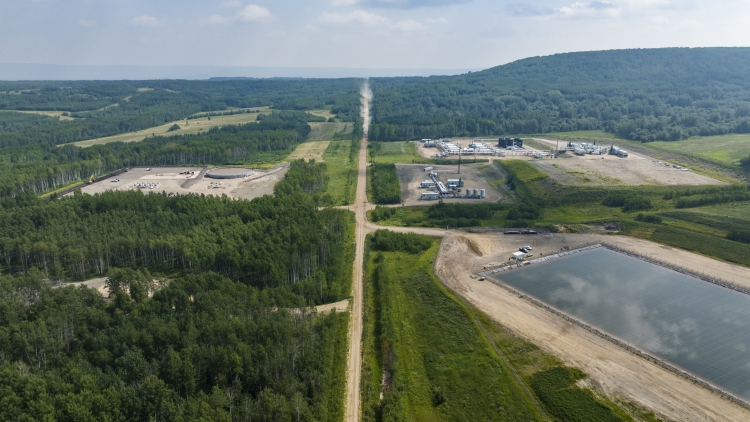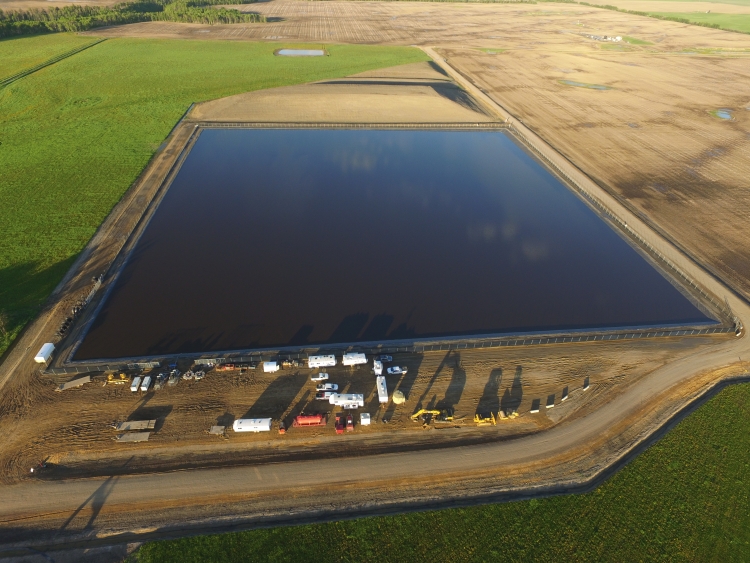Dealing with drought [Gas in Transition]
Drought conditions that have persisted in western Canada for the past couple of years could pose challenges for natural gas producers this year, consultant Deloitte warns in its latest energy price forecast published in late March, as major water consumers like agriculture, oil and gas and municipalities prepare to deal with potential use restrictions.
“Canada’s production base has a concentrated need for water, and it’s located right in the middle of some of the country’s most severe drought zones,” Deloitte says in its report.
As early as December 2023, regulators in both Alberta and BC were advising industrial water users of the potential for restrictions, citing snowpack levels that were only 72% of average in the Peace Basin of northeast BC, while reservoirs in southern Alberta were as low as 15% full, with little relief expected from the spring freshet, given relatively sparse snow cover and an early melt of mountain snowpacks.
By April 1, snowpack in BC’s Peace Basin was only 65% of normal, while other basins in the northeast were as low as 50% of normal. Across the province, snowpack was at 63% of normal, the government said, the lowest since at least 1970.
“Low snowpack and seasonal runoff forecasts combined with warm seasonal weather forecasts and lingering impacts from on-going drought are creating significantly elevated drought hazards for this upcoming spring and summer,” the provincial Ministry of Water, Land and Resource Stewardship said in its April update water resource update.
In Alberta, the Peace River has logged its lowest average flow this century, the Deloitte report notes, and in March, the provincial government’s water information portal was showing multiple water shortage advisories in northern areas. Alberta’s environment ministry has established what it calls a “Drought Command Team” to negotiate with major water users to find ways to reduce usage.
“Alberta is experiencing extremely low water levels in many parts of the province due to below-average snowpack and precipitation over the past several months, resulting in less runoff to rivers, lakes, and reservoirs,” the Alberta Energy Regulator (AER) said in a December bulletin. “With a high probability of a strong El Niño event this winter (resulting in lower precipitation and higher temperatures), there is a strong likelihood of low flows and low water levels persisting into the 2024 calendar year.”
Drought impacts “almost certain”
In northern BC, home to the prolific Montney gas play, drought conditions persisted through the summer and fall of 2023, impacting streamflows and groundwater levels, the BC Energy Regulator (BCER) said in a January 2024 note to industrial water users.
“Lower than average snowpack has been observed to date and the combined impact of these events has created an increased potential for drought conditions in 2024 and another summer of possibly limited water supply in the north,” it said.
When drought monitoring for 2023 wrapped up in November of last year, all four river basins in the northeast were at Drought Level 5, indicating that adverse drought impacts were “almost certain.”
But oil and gas producers in western Canada have been proactive for years in their efforts to reduce their use of fresh water. In 2022, the energy sector was allocated 1.23bn m3 of non-saline water, or less than 1% of the provincial total, and used just 21% of its allocation, with 82% of that coming from recycled water.
Still, the Canadian Association of Petroleum Producers (CAPP), whose members produce about 80% of Canada’s oil and natural gas, says the industry is monitoring drought conditions and engaging with provincial authorities in both Alberta and BC regarding their need for fresh water this summer and their implementation of drought mitigation plans.
“Individual companies are proactively planning for freshwater shortages by assessing ways to reduce surface water use in their operations, including the evaluation of alternative water sources such as lower-quality groundwater from deeper aquifers, municipal wastewater, and recycled produced water,” CAPP says.
Producers are also increasing their re-use of produced water and optimising water storage and use within operating areas by moving stored water from areas of low use to higher use areas.

Tourmaline Oil has water storage infrastructure throughout its Montney and Deep Basin operations. (Image credit: Tourmaline Oil)
Representative of producer efforts to limit water use are Tourmaline Oil, Canada’s largest natural gas producer and the second largest Montney producer, and Birchcliff Energy, which is focused on the Montney/Doig play in the Peace River Arch area of northwestern Alberta.
Tourmaline’s natural gas production averaged 2.4bn ft3/day in 2023, mostly from the liquids-rich Montney play and the drier Deep Basin in west central Alberta, and it has long been actively focused on limiting its water use. It leads the industry with the lowest freshwater use intensity, at some 0.11 barrels of water/barrel of oil equivalent (boe) of production, and 95% of the water it uses for fracturing operations is recovered and re-used.
Over the last five years, it has invested about C$50mn in water recycling and management facilities and has built or purchased more than 476,500 m3 of treatment/storage capacity. Tourmaline owns 10 water source/recycling facilities, was the first operator in Alberta to receive regulatory approval for the construction and operation of engineered containment ponds for recycled water storage and between 2017 and 2022 increased its usage of recycled water by 120%.
It has built more than 120 km of water pipelines to support its fracking operations with its own recycled water and eliminate more than 42,000 water transportation trucks from the road in 2022.
All of these investments will become even more important to Tourmaline if drought conditions in Alberta and BC persist, COO Earl McKinnon tells NGW.
“Tourmaline is highly mindful of the current drought conditions,” he says. “Our water management team is diligently working to optimise our water use efficiency, and our extensive water storage and recycling facilities will prove highly beneficial as we navigate the drought situation.”
With a contiguous land base spanning more than 240,000 net acres in the Alberta Montney north of Grande Prairie along the border with BC, Birchcliff produced about 374mn ft3/day of natural gas in 2023 and drills about 30 wells/year, all of which are fracked.
That requires a lot of water, CEO Chris Carlsen tells NGW, which is drawn from groundwater run-off, temporary diversion licences issued by the province for withdrawals from lakes and rivers when conditions allow, and three non-potable water wells drilled strategically around Birchcliff’s operating area that together provide nearly 1,000 m3/day of water when required.
A water storage pit in the Alberta Montney north of Grande Prairie operated by Birchcliff Energy. (Image credit: Birchcliff Energy)
The water is stored in 11 reservoirs located throughout the operating area, with a combined capacity of nearly 1.2mn m3, and delivered to frack sites through a network of above ground lay-flat hoses.
“Environmentally it works well because we’re not hauling all this water using trucks to the frack site,” Carlsen says. “We can pump it from one water reservoir right to the frack site using lay-flat hoses.”
With Birchcliff’s winter drilling programme now complete, the reservoirs have 500,000-600,000 m3 of water still stored, which gives the company ample water to complete the rest of its 2024 drilling programme and work a little bit into Q1 next year, Carlsen notes.
That should serve Birchcliff well as it navigates what promises to be a challenging drought year for much of the province. Infrastructure developed to support day-to-day operations, Carlsen says, will be invaluable in the coming months.
“We built this strategic infrastructure to reduce the number of trucks we have on the road, reduce the cost of fracturing, all those types of things,” he says. “That’s really why we built these reservoirs – we needed the clay to build roads and pad sites.”
The fact that the storage reservoirs will help mitigate any future drought impacts, he says, is merely a happy coincidence.




